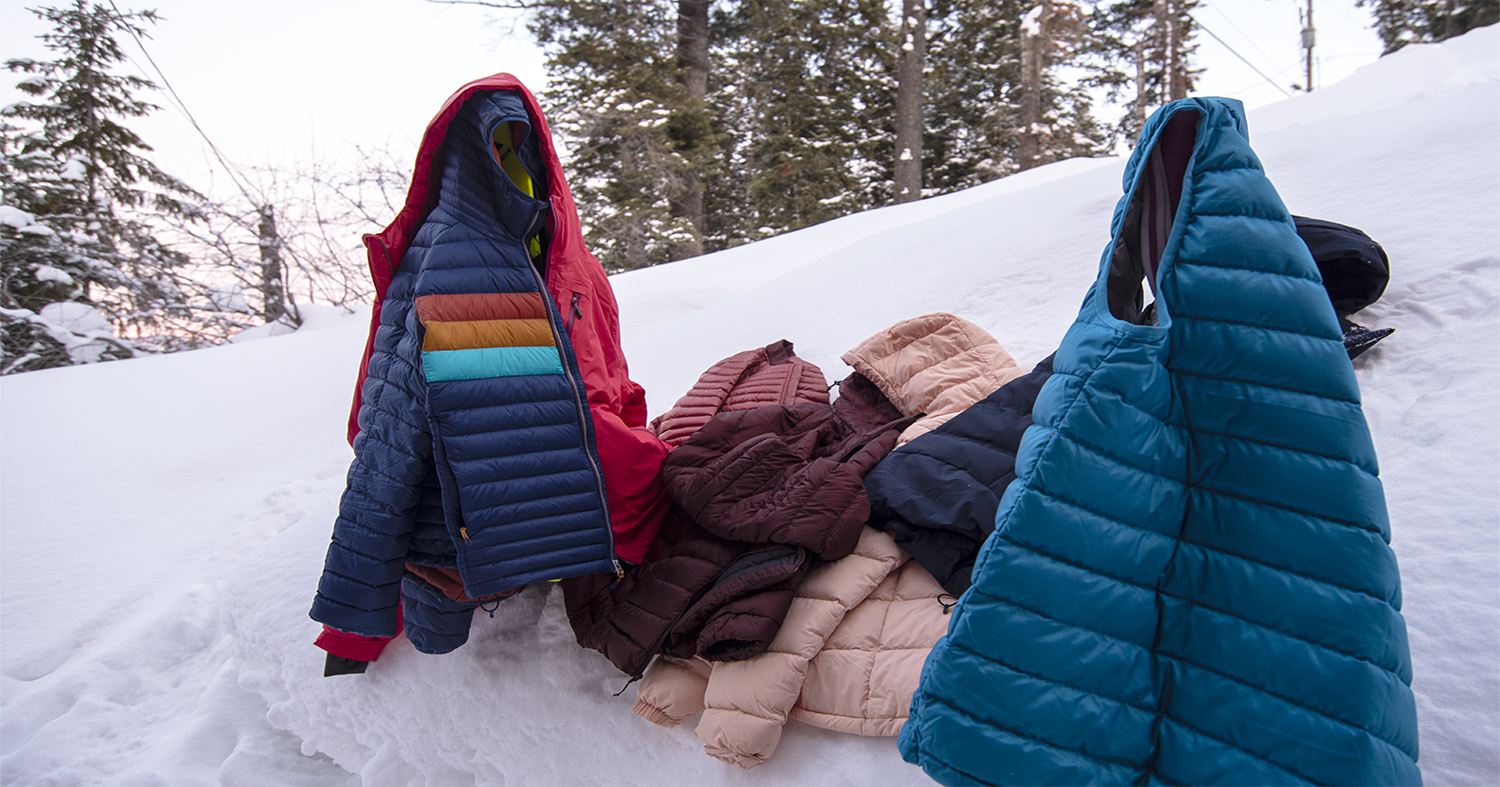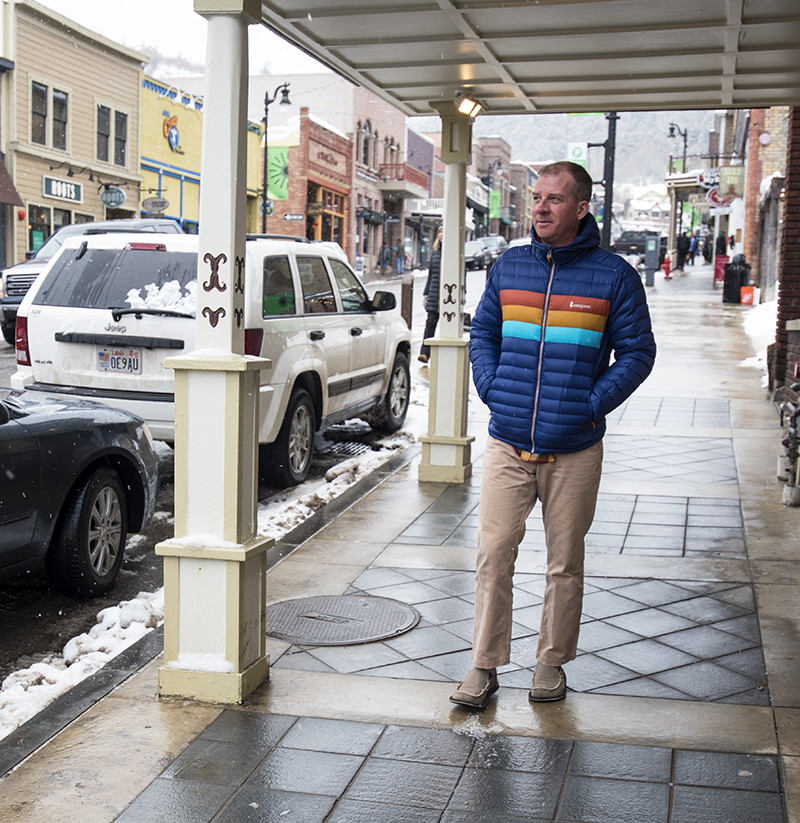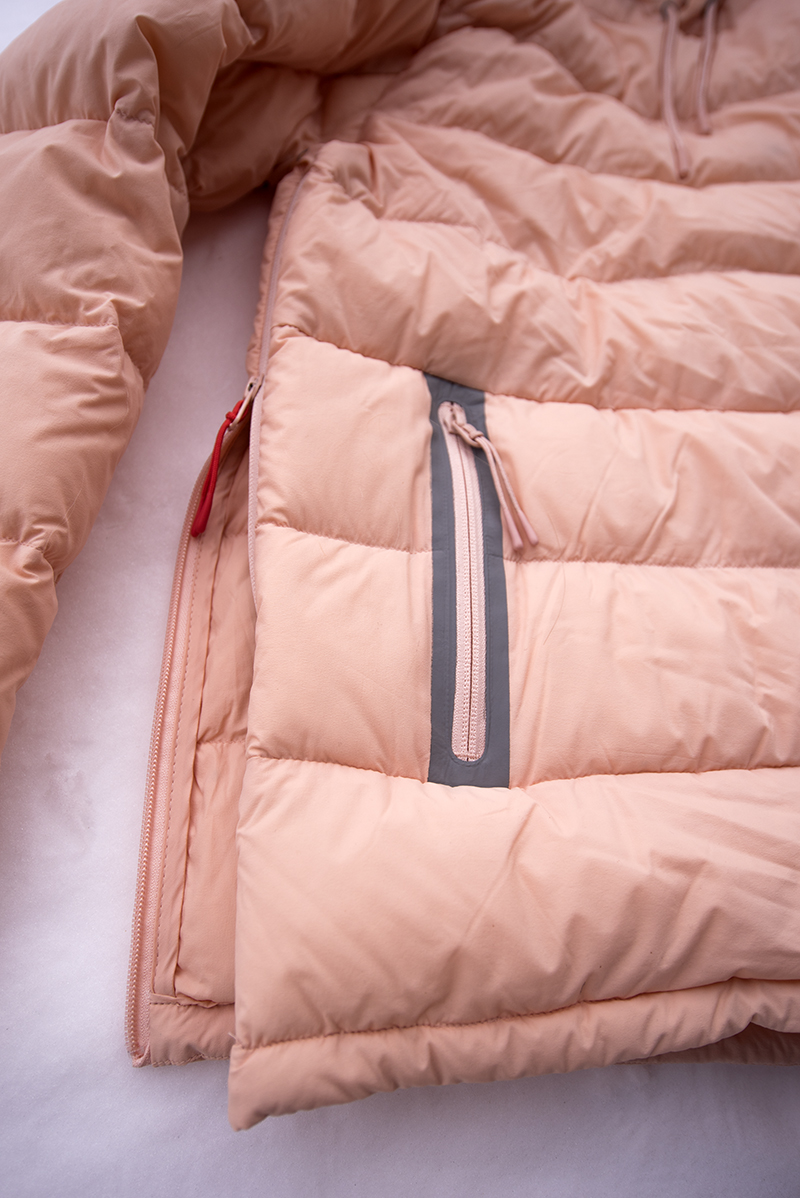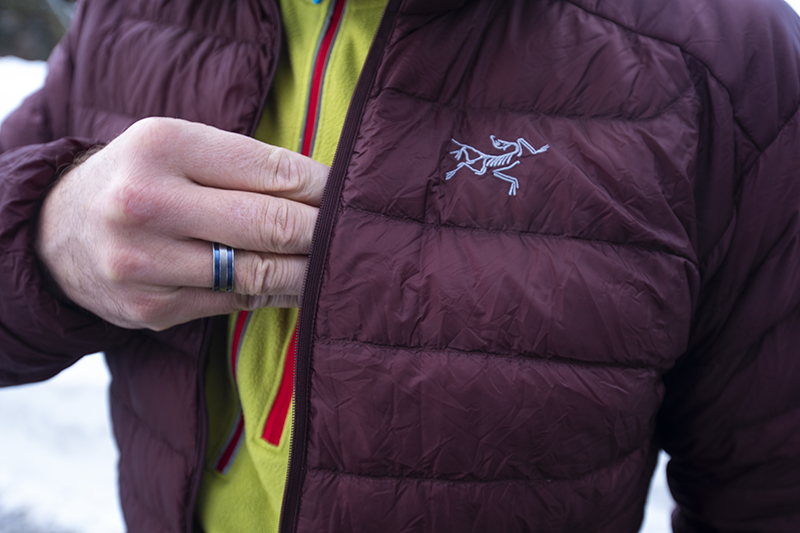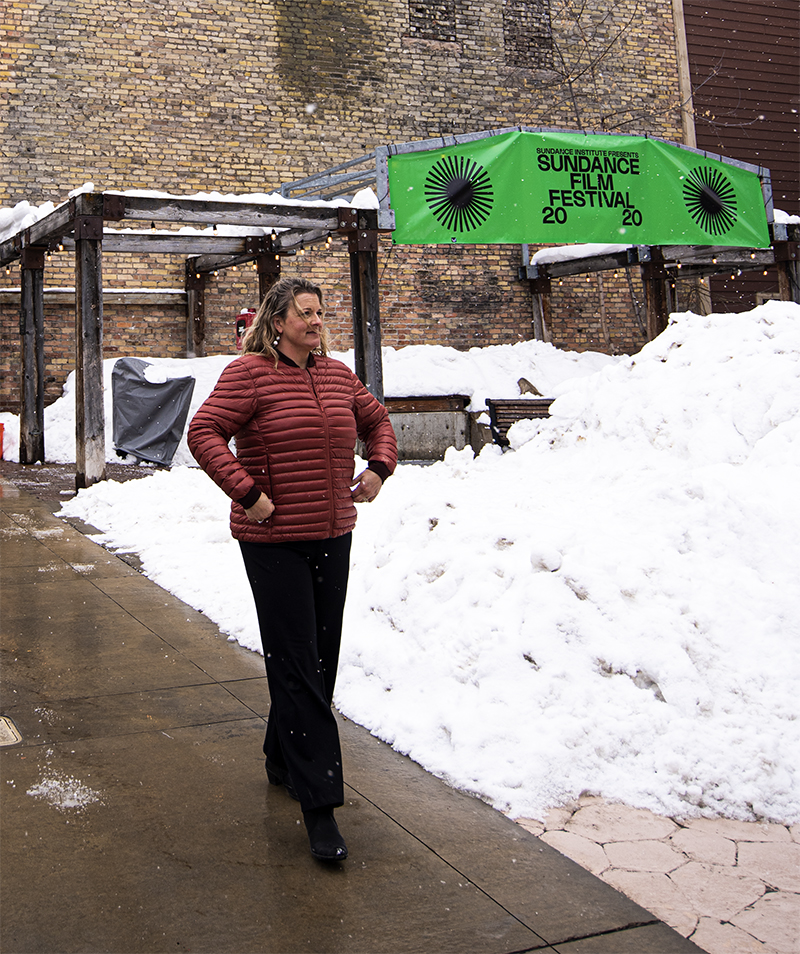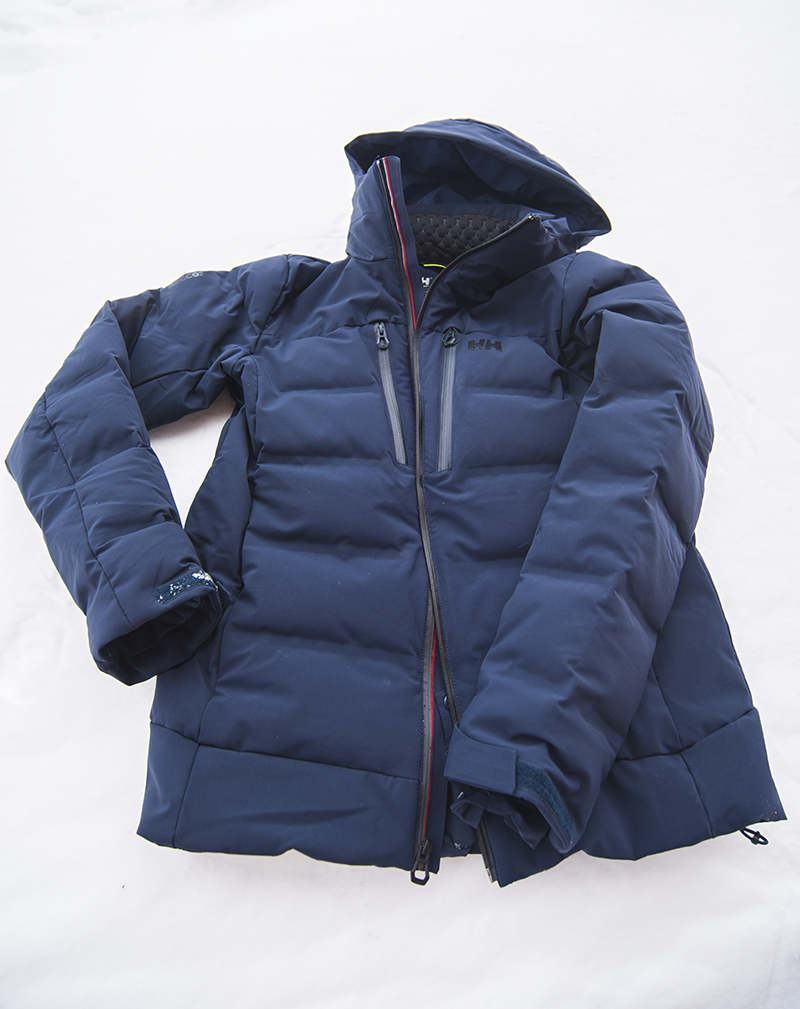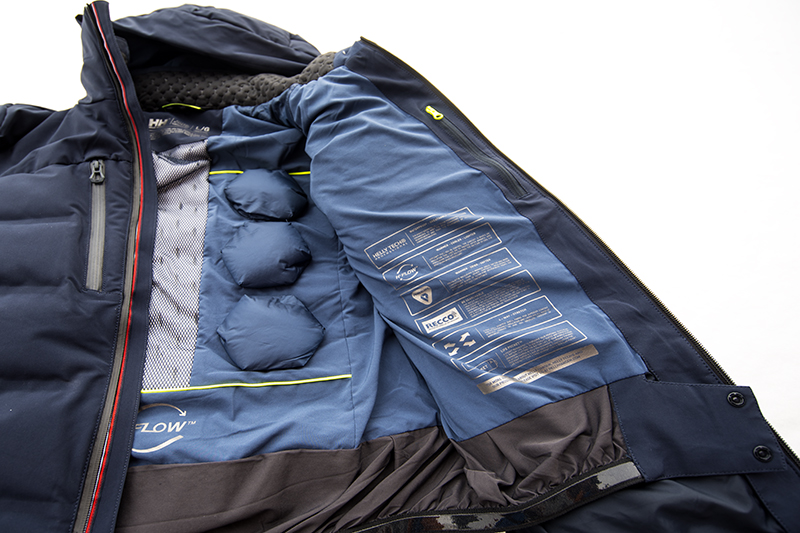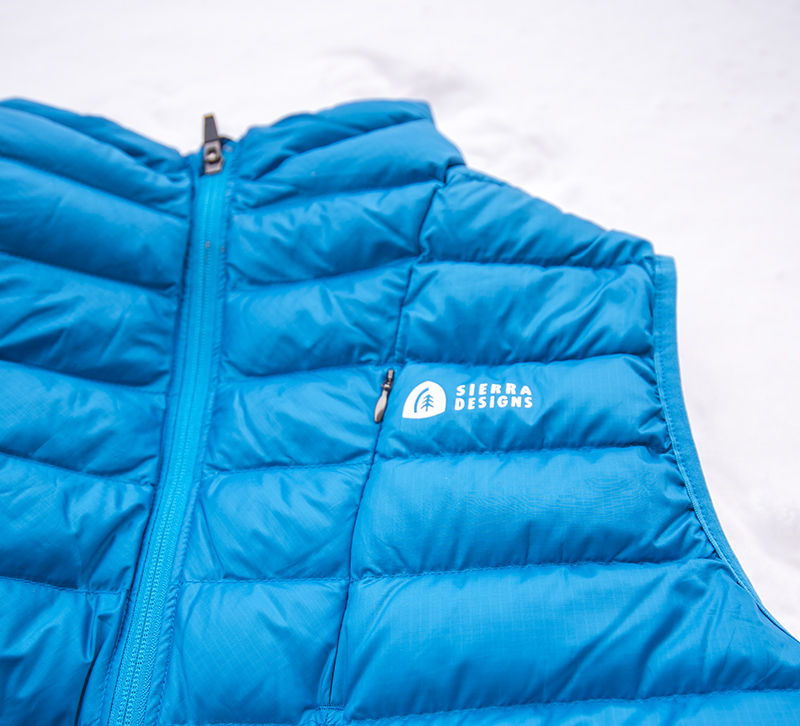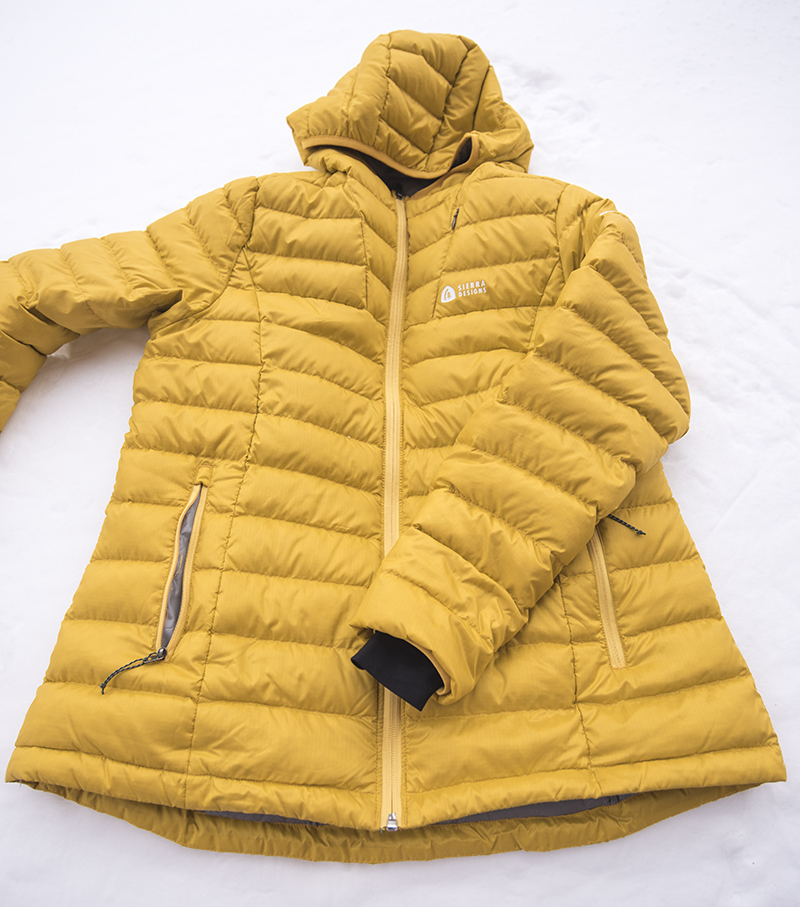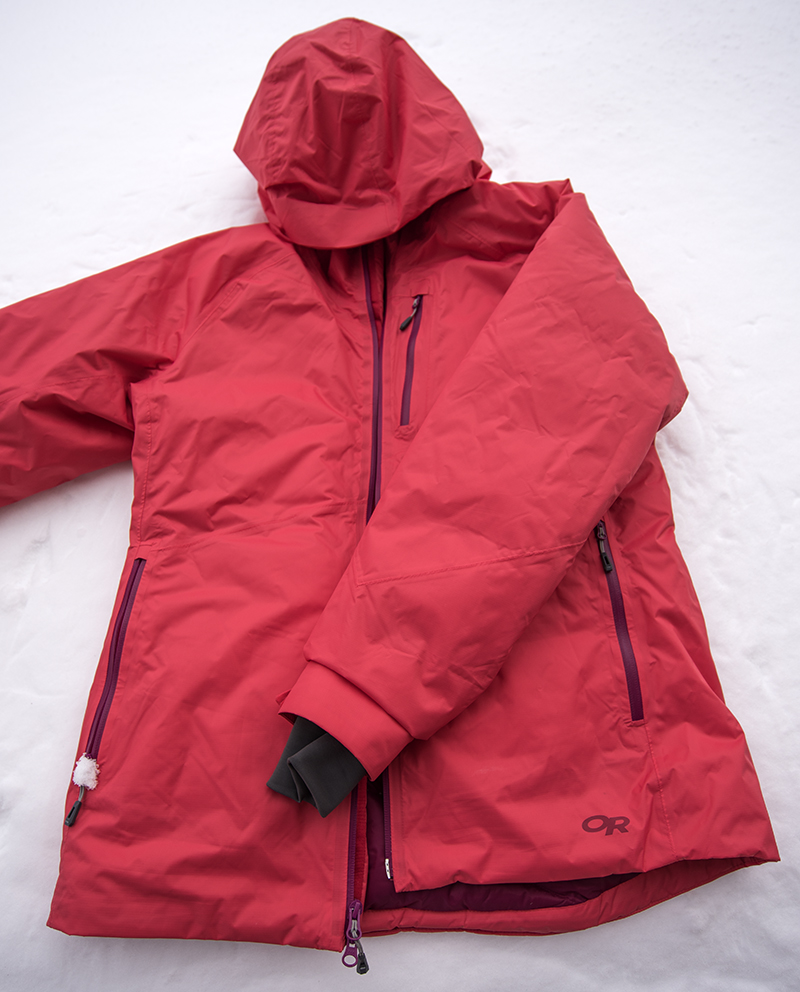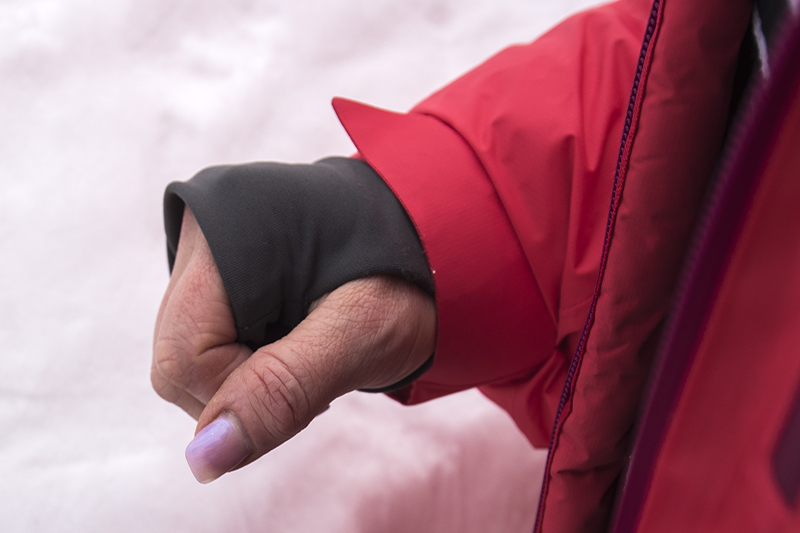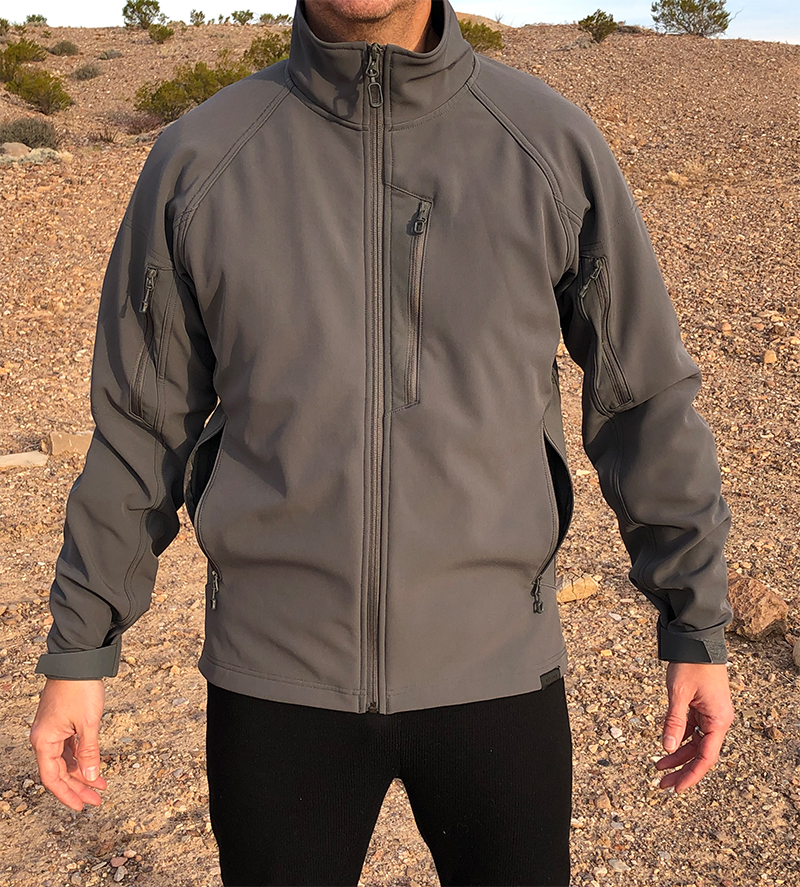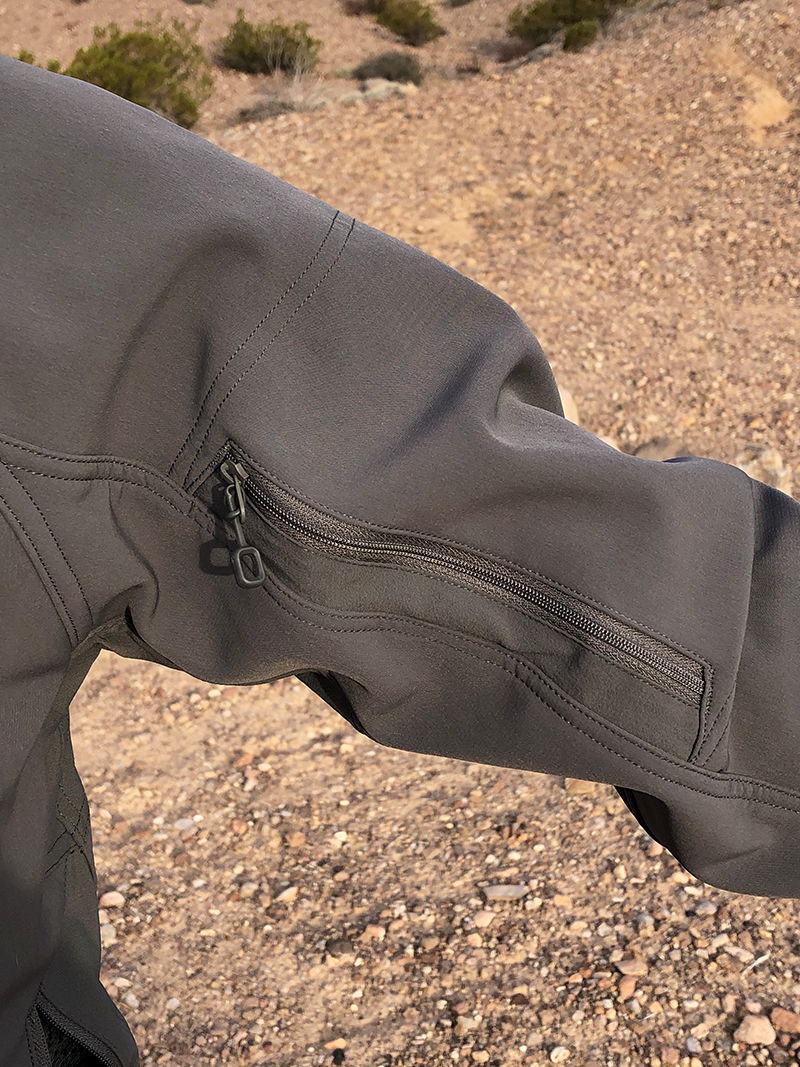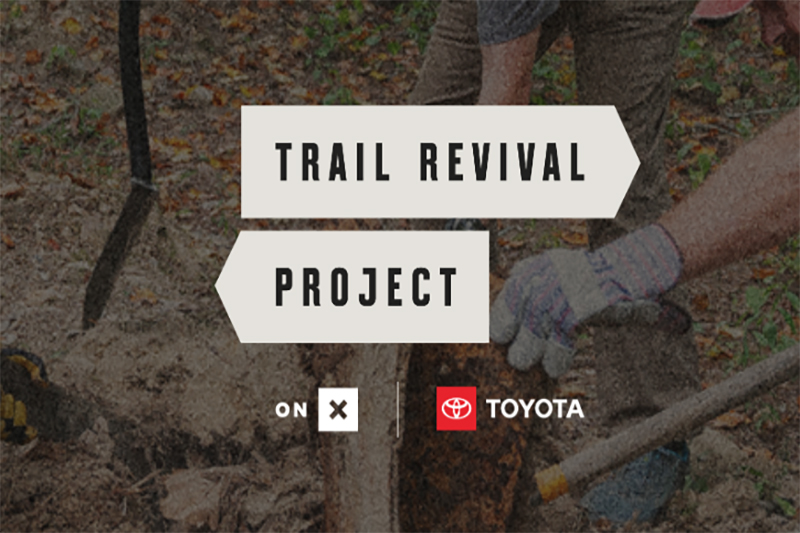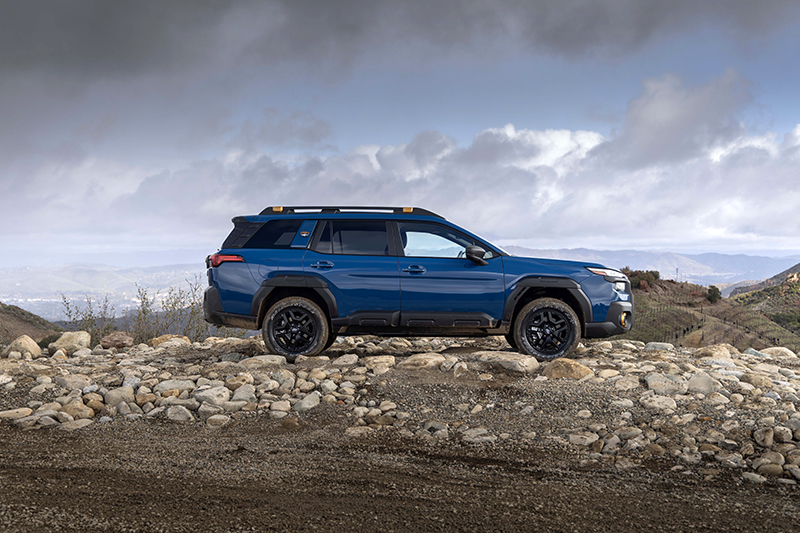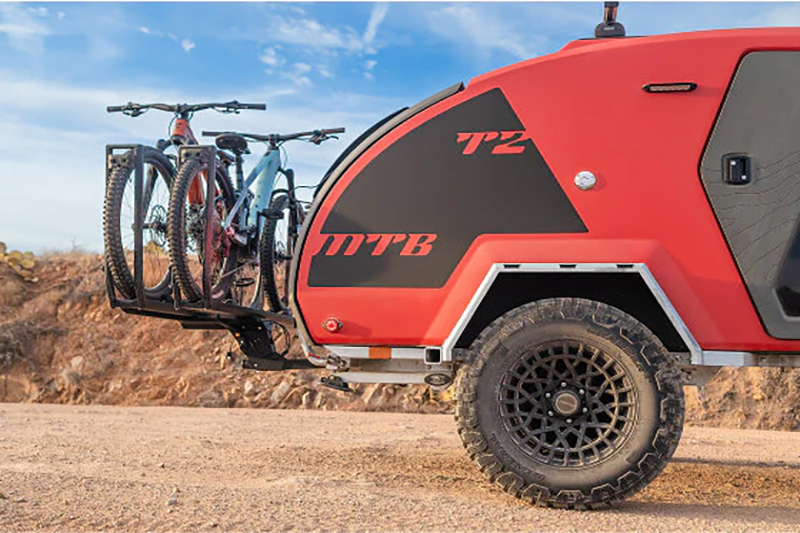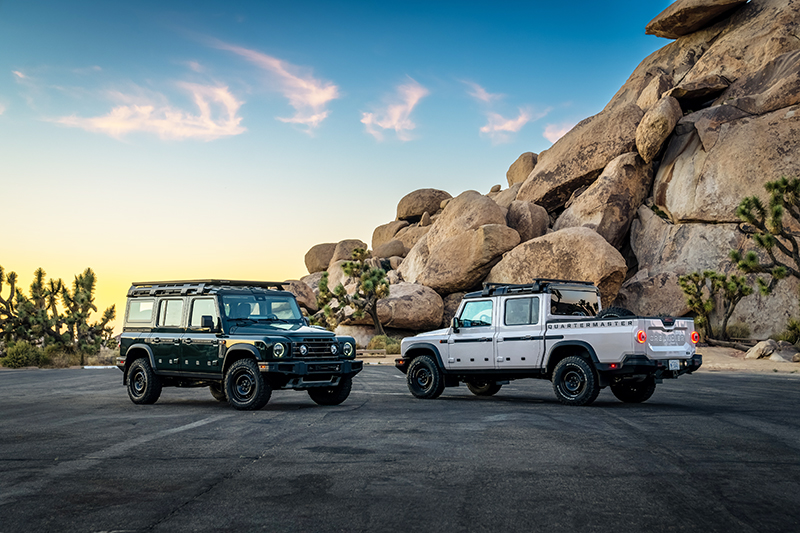Winter is in full swing and now’s a good time to invest in a quality warm jacket
Adventuring outside in the cold can be a blast and as a friend of mine once said, “It’s not bad weather, it’s bad gear.” The jackets/vests described below should help any adventurer enjoy winter adventures. Let it chill and snow!
Lucky for us, the natural world creates the best insulator: down. No doubt there are some incredible synthetic insulations on the market incorporated into a host of technical gear (see OutdoorX4 Gear Editor Kraig Becker’s article on the high tech fabrics that make outdoors gear great in Issue 36 of OutdoorX4 Magazine). However, down maximizes warmth, comfort, and insulation with both synthetic and down insulators having their pros and cons. This is not that article. Jackets/vests that use down as the main insulator allow for a variety of uses whether catching a bite to eat on the town, hitting the ski the slopes, out snowshoeing, exploring in your 4×4, or a host of other outdoors activities. Any one of the following examples will fulfill expectations.
Where is the goose?
Down insulation is a natural, three-dimensional plume that grows under the feathers of ducks and geese. It’s not only an outstanding insulator but also is far better for the environment. It is a renewable, natural resource that biodegrades at the end of its lifespan. ALLIED Feather and Down started in California with a sole purpose to safeguard the environment and the welfare of the animals providing the down feathers. They help set the universal industry Responsible Down Standard and created TrackMyDown.com in order for the buyer to see where their down originated and the overall supply chain. With the help of Allied, manufacturers and companies started to call attention to where the down originated and the treatment of the animals providing the down feathers. ALLIED Feather and Down has partnered with over 100 companies with names such as The North Face, Outdoor Research, and Helly Hansen—all of which strive to design and create excellent apparel with down feathers that are harvested responsibly.
Down Rating: What does the fill number mean
Down jackets/vests feature numbers like 800-fill or 650-fill. Those numbers translate into how many cubic inches of loft is produced with one ounce of down feathers. The higher the fill number the greater the loft and insulating efficiency. Higher fill numbers do not indicate that the product is warmer than a lower fill number. For example, an 850-fill down jacket is not necessarily warmer than a 650-fill down jacket. Many other variables including materials used and the actual amount of down-fill inside the jacket determine the warmth of the jacket.
The higher down-fill numbers also indicate that those products are more compressible and packable. So, a packable jacket, vest, or sleeping bag requires a higher-fill number. Many of the jackets and vests tested had 800-fill down in them. Therefore, they compress to fairly small packages.
Obviously, jackets/vests fit each and everyone differently. However, I tried to label the fit either standard or athletic. Standard generally fits looser, while athletic fits tighter, closer to the body. I also labeled the temperature ranges and elevations evidenced while we tested the jackets and vests. Overall, each jacket/vest is high quality and can accommodate a variety of needs.
The following highlights several of the jackets we’ve used over the past several months. Most of them are down-filled while those from Beyond Clothing and GORE-TEX are examples intended for versatility beyond just extreme cold. Purchase one, wear one, and continue to adventure this winter and beyond.
CotoPaxi Fuego Jacket and Fuego Vest: $250/$150
www.cotopaxi.com
Availability: Men’s and Women’s
Fit: Standard
Tested: 20-40 degrees at 6,500-7,000 feet
Overview: Cotopaxi is named after a national park in Ecuador that I want to explore. Until then, I will wear the apparel with the same name. The Fuego jacket is an “attention getter.” Every time I wore the jacket, I received a compliment: ”Nice jacket.” “I love that jacket.” “Love the colors.” Fuego’s color scheme makes it stand out when compared to monochromatic jackets. The 800-fill responsibly sourced down jacket is very comfortable to wear. It comes with a drawstring hem. It’s not overly tight or loose. The jacket is made with a water resistant nylon and features interior pockets, two exterior hand pockets, and a fitted hood. I tested the jacket in winter conditions but see this jacket also as a perfect layer to toss on during a summer camping trip to the San Juan Mountains or the Teton Range.
Too warm? Try the Feugo Vest for the warmer months of the year. The same 800-fill down keeps the body, core warm; and without the sleeves, it makes a perfect addition for summer adventures. Both the jacket and vest come with a stuff sack and compress to the size of a water bottle.
Likes: Stylish, attractive, colorful
Dislikes: Does not include an exterior chest pocket to carry cell phone, etc.
Bottom Line: An all-around jacket used for Après-ski (socializing and casual activities after a day of skiing) or keeping warm around a summer campfire in the high country. The vest accommodates adventuring in the high country during the summer months.
Foehn Robson Down Hoody: $260
www.wearfoehn.com
Availability: Men’s and Women’s
Fit: Standard
Tested: 25-35 Degrees at 7,200 feet
Overview: Don’t know the name? Neither did I. The side zipper was designed to make the pullover easy and simple to put on as evidenced by my wife who raved about its warmth and features. The pit vents are an excellent feature when recreating as the jacket uses 800-fill down following the Responsible Down Standard (a global awareness initiative formed in 2014 to prevent cruel and inhumane treatment of duck and geese). My wife loved hiking and snowshoeing in this well-designed pullover. The fabric is enhanced by a Durable Water Resistant (DWR) treatment, so light moisture/snow gets wicked away. She loved the front hand pockets and drawstring hem. Simply put, the Robson hoody stood out as a well-designed “jacket.” It’s understated, but supremely designed.
Likes: Stylish and unique.
Dislikes: Few color selections.
Bottom Line: For active pursuits. Best worn as a single, outer layer. Throw on for a walk in the neighborhood or belaying a climber in Joshua Tree National Park.
Arc’teryx Cerium LT Hoody Jacket and Nexis Jacket $379/$239
www.arcteryx.com
Availability: Men’s and Women’s
Fit: Athletic
Tested: 15-30 Degrees at 7,000 feet
Overview: The Arc’teryx Cerium LT Hoody Jacket immediately warmed my core in the backcountry of the Wasatch Mountains. The jacket’s 850-fill down made an outstanding mid-layer while backcountry skiing. The hood provided head warmth while I placed my skins onto my skis after a powder run. The Cerium LT Hoody is made for active pursuits. The close, athletic fit provides ample warmth and makes an ideal midlayer. The articulated construction in the jacket provides ample movement and stretch. The jacket is noticeably light at just under 12 ounces. At times, I forgot I was wearing a jacket. Arc’teryx prides itself in designing and creating high quality apparel. This jacket is a prime example. The lightweight zipper and nylon material make this jacket pack small and light. It’s not made for wet conditions; hence it provides a great layer under a waterproof layer. However, when winter weather is dry and cold, this is an excellent stand-alone layer. The jacket compresses to the size of a soda can with the provided bag. This small, lightweight, extremely warm jacket enhances any outdoor adventure.
The Nexis Jacket is one of my wife’s favorite tested jackets. The jacket is insulated with 750-fill down and with it’s sleek fit; is a great choice for everyday life during the winter. The low-cut collar with no hood adds to the streamline look and feel of the jacket. Going out on the town? This is the jacket. The warmth was outstanding and with two front hand pockets and a sneaky inside one, this jacket can store a few goodies or just keep your hands warm.
Likes: Immediate warmth and comfort. Nexis jacket price.
Dislikes: Price is a consideration (Cerium LT Hoody Jacket).
Bottom Line: Active pursuits where weight and pack compressions are concerns. An awesome mid layer. Throw a thin waterproof layer over it to backcountry ski, climb the Grand Tetons, or hike Canyonlands National Park.
Helly Hansen Rivaridge Puffy: $525
www.hellyhansen.com
Availability: Men’s
Fit: Standard
Tested: 15-40 Degrees at 7,000-10,000 feet
Overview: This jacket is the “bomb.” This jacket is heavy duty. It’s neither light nor packable. It’s a heavy-duty outer layer made for winter pursuits. Putting it on and zippering it closed, I felt supremely warm and protected from the elements. Quality and features are numerous and effective. The jacket combines down and synthetic insulation to create a warm, technically advanced jacket. Chest pockets are strategically placed to access phone or goggle wipe (enclosed). The four-way stretch waterproof fabric, wrist gaiters, and fully sealed seams invite the adventurer to play freely in the snow. Downhill skiing? Snowmobiling? Winter mountaineering? This is the jacket. The jacket felt perfect while ripping down the slopes at Park City Mountain Resort. Articulated arms and elbows enhanced its comfortable fit; the hood was helmet-capable for a nice chairlift ride up the mountain. Velcro cuffs, wrist gaiters, and powder skirt kept the cold and snow out and trapped in the heat. I only wore one base layer underneath and spent the entire day skiing in warmth and comfort. This jacket could become my winter outdoor activity jacket for the next 10 years. Downhill skiing Jackson Hole? Snowmobiling in Yellowstone? Mountaineering in the Rockies? Wear this jacket and enjoy winter!
Likes: Excellent fit. Wrist gaiters, powder skirt, pit zips, etc. Many features.
Dislikes: Collar zipper cover flaps and irritates my chin.
Bottom Line: This is highly featured, technical jacket made for attacking winter pursuits like downhill skiing or snowmobiling. Do not take this jacket if weight is a concern.
Sierra Designs Whitney Jacket and Joshua Vest: $189/$149
www.sierradesigns.com
Availability: Men’s and Women’s
Fit: Standard
Tested: 20-40 Degrees at 7,000-8,000 feet
Overview: The Whitney Jacket and Joshua Vest offer comfort and design along with bright color choices. The jacket and vest are made from 800-fill DriDown. The drawstring hem, elastic cuffs, and wrist gaiters kept out the cold as my wife hiked around Park City, Utah. As she walked, she utilized the two front hand pockets to warm her fingers. The jacket stows nicely within itself, as it can be stuffed into one of the pockets for a perfect carrying case. The Whitney Jacket comes with a hood that covered Louise’s head nicely even though she was also wearing a hat. The jacket and vest make great winter attire for a snowshoe hike, a walk in the neighborhood, or après ski. I wore the vest as midlayer under a thin waterproof, exterior layer and was plenty warm while carving the slopes of Deer Valley Resort. The vibrant color choices make both the jacket and vest stand out.
Likes: Great jacket/vest for a great price. Exterior chest pockets. Vibrant color choices.
Dislikes: I wish the vest fit a little more snug.
Bottom Line: A well thought out jacket and vest. The best bang for the buck!
Outdoor Research Floodlight II Down Jacket: $329
www.outdoorresearch.com
Availability: Men’s and Women’s
Fit: Standard
Tested: 15-30 Degrees at 7,000-10,000 feet
Overview: My wife and I pulled into the ski lot at Park City Mountain Resort and noted the outside thermometer reading at 15 degrees. Oh boy. She wore the Floodlight II Down Jacket. We geared up for a few runs on the mountain. An hour or so later, my wife said, “I love this jacket. I’m so warm!”
At first glance, the OR Floodlight II Jacket seems simple in nature. But, oh, that’s wrong. It’s packed with features. The jacket is made with 650-down/responsibly sourced along with waterproof/breathable outer layer comprised of fully taped seams. Little features like a chest pocket and wrist gaiters add to functionality and warmth. The helmet-compatible hood is a bonus when Mother Nature turns ugly while carving down the slopes. The jacket wore well and provided ample warmth while on the slopes. My wife loved the streamlined design of the jacket.
Likes: Overall functionality of the jacket and features for waterproof, down comfort.
Dislikes: No armpit vents.
Bottom Line: A streamlined down jacket worn for winter pursuits. Easily could be thrown on for après ski or skiing the black runs off the backside of Vail Resort.
Beyond Clothing Testa Shoftshell Jacket: $150
www.beyondclothing.com
Availability: Men’s but can be worn by women
Fit: Standard
Tested: 50-60 Degrees at 2,500 feet
Overview: I used this jacket extensively while at basecamp and exploring at Big Bend National Park in late November. The fit is extremely comfortable with strategically-placed storage in the chest and bicep area. An inner fleece liner retains heat but also works nicely to wick away moisture. I particularly like the 4-way stretch nylon shell that’s durable enough to protect the jacket from tears but also repels moisture. Additionally, the Testa Softshell is designed to work as a layering jacket and works nicely with baselayers to help provide additional warmth on days when you’re out in temperatures below 50 degrees.
My only real complaint, which I have discussed with Beyond Clothing and they are looking at a quick turnaround to correct, is the neck line and cuffs around the wrist. The neck line of the jacket stays almost straight up, even when not zipped, and was a bit of a nuisance and uncomfortable. The cuffs, which are a hook and loop design, stay firmly in place but the top part of the cuff also sticks up (like the neck line) which causes the cuff to sometimes get snagged while placing your hands into the hand pockets. Overall, these two issues are not game changers and would not impact my decision as to whether I would purchase this jacket or not. It’s a beautifully-built, multi-functional piece of gear I highly recommend and I expect these small concerns to be corrected soon.
Likes: Overall functionality of the jacket and features for storage and working in conjunction with baselayers to provide additional warmth on cold days whether hiking, snowshoeing, or walking around town.
Dislikes: Neck line and cuffs.
Bottom Line: A high quality jacket that’s multi-functional and available at a very reasonable price.
GORE-TEX Active Hooded Jacket: $299
www.gorewear.com
Availability: Men’s and Women’s
Fit: Athletic but just loose enough to be comfortable
Tested: 50-60 Degrees at 2,500 feet as well as in rain
Overview: Lightweight and durably waterproof, the GORE-TEX Active Hooded Jacket is a must-have for any adventurist who needs exceptional rain protection while hiking, running, mountain biking, doing any active outdoors activity, or even walking around town. Utilizing a GORE-TEX membrane designed to provide maximum comfort while also protecting from a variety of elements, this jacket has proven its worth while enjoying a host of activities in conditions that are often times not ideal.
The elasticized cuffs allow for full customization around the wrists to ensure water doesn’t penetrate to your hands when using gloves (I’ve been using the GORE-TEX Infinium Stretch Gloves while cycling and hiking and they, too, have proven invaluable), the hood is fully adjustable, and the neck line is comfortable when fully zipped. The design is mostly about function with minimal storage features other than the two front hand pockets; however, this simplicity is welcome as you can easily use this jacket above other base and mid-layers that will most likely have storage within them. There is also back ventilation to keep moisture from retaining inside the jacket and a reflective logo keeps you visible when the sun goes down. I love this jacket and while pricey at $299 (yeah, that’s $300+ with tax), it’s the type of jacket you’ll have in your stable of gear for years that won’t let you down.
Likes: Simplicity while also offering maximum protection from rain and wind while also offering exceptional breathability in a very lightweight package.
Dislikes: Other than price, nothing else. It’s a great jacket.
Bottom Line: High quality, simply designed, fully waterproof and windproof.
How to Care for Down?
Caring for a down jacket/vest will allow it to last a lifetime by following a few tips and tricks. First, many of the down jackets/vests above feature a thin, exterior shell which could feasibly rip, so remain mindful of surroundings particularly in the backcountry. I love to wear my down jacket around the campfire but remain mindful as embers can fall on your jacket and instantly create holes, allowing the down feathers to escape.
Additionally, down feathers get dirty over time through body oils and environmental dirt. Once dirty, the feathers can attract water and once that happens, the down insulative properties can become compromised. Wet down feathers clump together and retain weight which destroys the down’s insulating abilities. Also, by being wet, your jacket can actually “pull” body heat away. So, keep down clean and if you plan to be in an environment where it could rain, your down jacket can be used as a mid-layer and supplemented with a waterproof outer shell that’s waterproof to protect your down. Be mindful that washing the down jacket/vest is different than laundering your clothes and towels. If done improperly, it can ruin your jacket. I recommend the Down Wash Direct from NIKWAX (www.nikwax.com) to wash any down article you own. NIKWAX believes in “clean chemistry”, so their wash/soap is water-based and biodegradable. Use a front-loading washing machine, then throw it in the dryer with a tennis ball and the down jacket/vest will come out clean and feeling new (dry on super low heat to avoid damage to the fabric or down). For reference, an article on NIKWAX products was featured in the print edition of OutdoorX4 Magazine in 2018 by Gear Editor Kraig Becker. Visit our Issues page HERE to access all past issues in digital as a subscriber.
Adventure On….
Yes, it’s snowing and cold outside. But, don’t let the weather stop you. Embrace it! Grab one of these down jackets, wear it, and continue adventuring during the days of winter. Whether it’s skiing in the Rockies, snowshoeing in the Adirondacks, or walking your dog through the neighborhood there are many things you can do outside and still be warm. Plus, Spring will be here soon but until then, outside adventure awaits. Dress warm and play!
OutdoorX4 Magazine – Promoting responsible vehicle-based adventure travel and outdoors adventure


